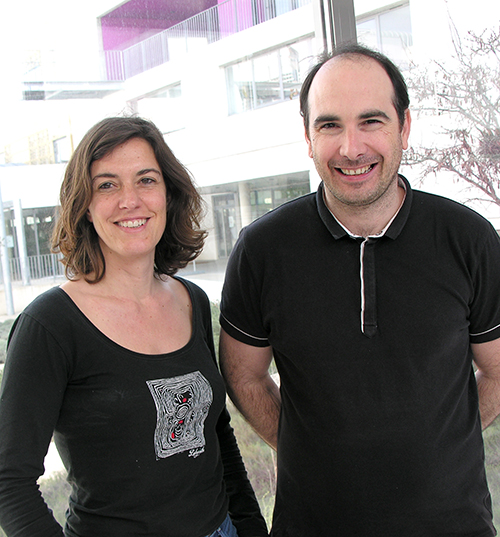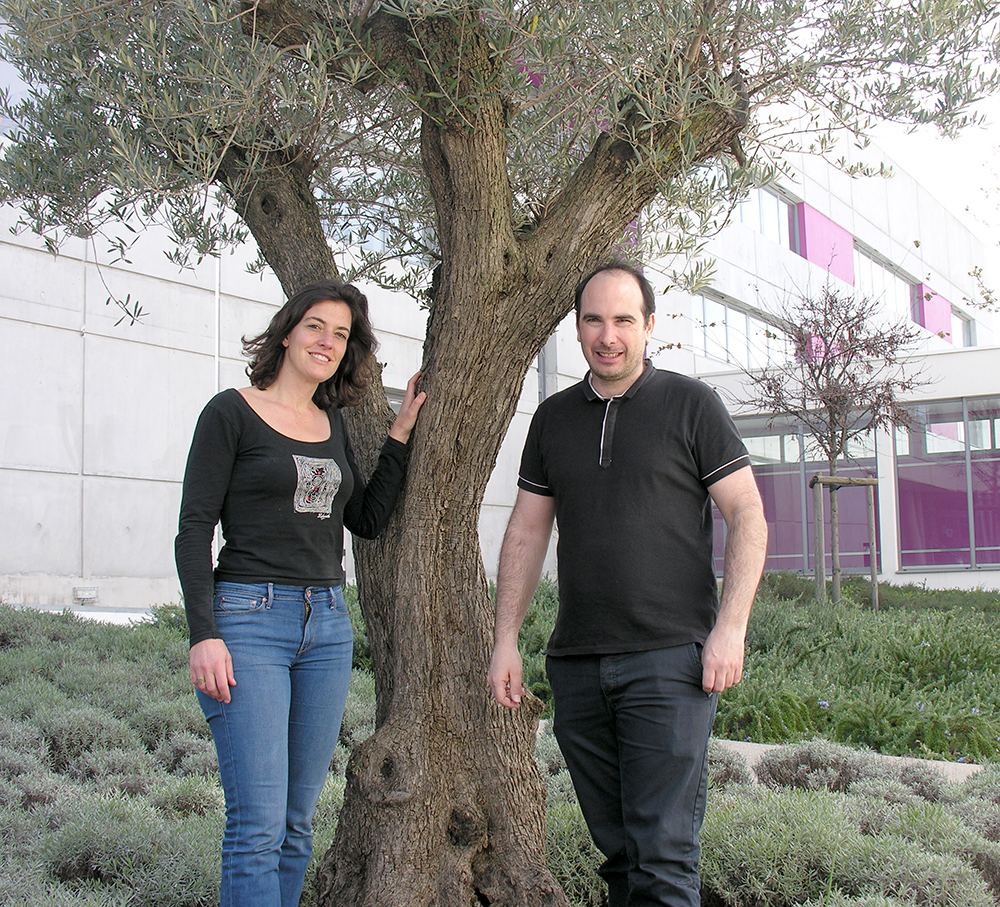
BOURSES ERC « CONSOLIDATOR » : 2 lauréats à l'IGF, Julie Perroy (CNRS) et Sébastien Granier (Inserm)
Le Conseil européen de la recherche (ERC) annonce les résultats de l'appel « ERC Consolidator grant 2014 » qui récompense des chercheurs d'excellence ayant entre 7 à 12 ans d'expérience après leur thèse. Au total, toutes disciplines confondues, ce sont 372 projets qui ont été sélectionnés, parmi lesquels 53 sont hébergés par la France.
Deuxième appel du Conseil européen de la recherche (ERC) du programme Horizon 2020, l'appel « ERC Consolidator grant 2014» finance des projets de recherche exploratoire, portés par des chercheurs ayant obtenu leur doctorat depuis 2 à 7 ans à la date du premier janvier 2014. L'excellence scientifique au niveau européen est l'un des principaux critères de sélection. Cet appel a bénéficié d'un budget global d'environ 713 millions d'euros, contre 523 millions d'euros en 2013. Les lauréats se voient ainsi attribuer, en moyenne, une bourse de 2 millions d'euros pour une période de 5 ans.
Avec 53 porteurs de projets sélectionnés sur 260 candidatures au niveau national, la France se place en troisième position derrière le Royaume-Uni (86 projets) et l'Allemagne (66 projets) et devant l'Espagne (32 projets). Un bilan positif par rapport à l'appel 2013, qui était le premier appel « Consolidator grant » et pour lequel 42 projets avaient été retenus pour la France.
2 lauréats à l'IGF :
- PERROY Julie (CNRS) pour son projet : Versatility of scaffold complexes in vivo to control synaptic plasticity (Mécanismes moléculaires et cellulaires de l'apprentissage et la mémoire)
Receptors and associated scaffolds, together called receptosome, are relatively stable structures, but exchange of individual adaptor proteins can occur on a short time scale and in a highly regulated manner, which provides fine-tuning, speed, and specificity to the receptor signaling. Therefore, understanding how receptor function is affected by the composition and dynamics of complexes is an essential biological concern that will offer the opportunity to target exclusively the therapeutically relevant signaling pathway of a given receptor. We propose that in the brain, receptosome dynamics is involved in fine-tuning synaptic transmission and plasticity, which might be crucial for cognitive functions.
First, we will establish the link between molecular events, neuronal signaling and memory performance. This project proposes live recording of molecular events and cellular signaling during memory encoding. Second, new specific therapeutic targets will be proposed for the treatment of cognitive deficiencies: instead of interfering with the ligand-biding pocket of the receptor, we propose to target specific scaffold interactions. This strategy will only modify a specific altered function of a receptor without modifying other functions (thus, avoiding undesired side effects). Finally, within the scope of this proposal, we will develop innovative techniques that might be of high interest for a broad community of researchers to monitor the versatility of protein-protein interactions in space and time. To conclude, we will establish the functional significance of oligomer remodeling in the physiological synaptic plasticity and try to restore it in neurological disorders.
Lien vers la page équipe : http://www.igf.cnrs.fr/index.php/fr/h-teams-fr/h-perroy-fr - GRANIER Sebastien (Inserm) pour son projet : Molecular and structural pharmacology of adiponectin receptor: towards innovative treatments of obesity-related diseases (Pharmacologie moléculaire et structurale des récepteurs de l'adiponectine: vers des traitements innovants de maladies liées à l'obésité.)
The human kind is witnessing an escalation of obesity-related health problems such as cardiovascular diseases and type 2 diabetes. A recent groundbreaking study revealed adiponectin receptors (ADIPOR) as key targets for treating such obesity-related diseases. Indeed, the modulation of this integral membrane protein by small molecules agonists ameliorates diabetes and prolongs lifespan of genetically obese rodent model. Despite these exciting results and the importance of ADIPOR in human physiology, there is a complete lack of knowledge of ADIPOR mechanisms of action and pharmacology. This is mainly due to the challenges associated with the characterization of membrane protein structure and function. To fill this gap of knowledge, I propose here to characterize the the proximal signaling pathways associated with ADIPOR activation as well as the molecular and structural mechanisms of ADIPOR activation. We will develop an innovative integrated strategy combining state-of-the-art molecular and structural pharmacology approaches including 1) molecular analyses of ADIPOR network of interaction using resonance energy transfer measurement in living cells and a proteomic analysis and 2) structural analyses of ADIPOR and signaling complexes using biophysics and X-ray crystallography. Our data will have a major impact on drug discovery for treating obesity-related diseases as it will enable the application of structure-based drug design and in silico screening for the molecular control of ADIPOR activity.
Lien vers la page équipe :http://www.igf.cnrs.fr/index.php/fr/h-teams-fr/h-granier-fr
Plus d'informations :
- Communiqué de presse CNRS : http://www2.cnrs.fr/presse/communique/3947.htm
- la liste des 25 lauréats hébergés par le CNRS.
- la liste de l'ensemble des lauréats de l'appel « ERC Consolidator grant 2014 » (classés par pays).





